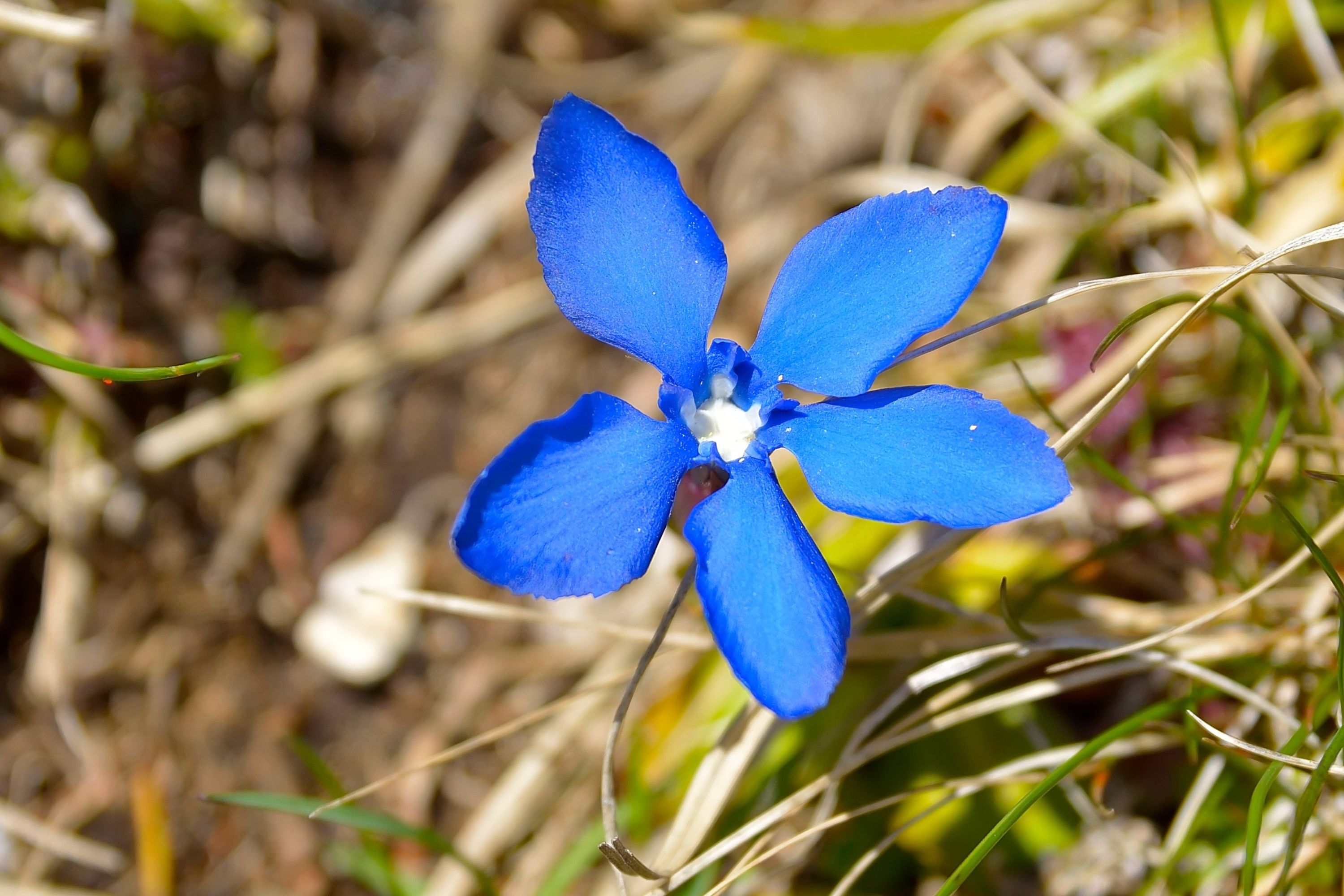Snow gentian
(Gentiana nivalis)

Description
Gentiana nivalis, commonly known as the snow gentian, is a herbaceous plant species belonging to the Gentianaceae family. This alpine plant is found in the mountains of Europe, where it grows in subalpine and alpine meadows, rock crevices, and scree slopes. The plant has a long history of use in traditional medicine, and its stunning blue flowers make it a popular ornamental plant. Description Gentiana nivalis is a small, clump-forming perennial herb that typically grows to a height of 5-15 cm. The plant has a deep taproot and several short stems that emerge from a basal rosette of leaves. The leaves are narrowly elliptic or oblanceolate, 5-25 mm long, and arranged in opposite pairs. The leaves are usually hairless, but sometimes have a few scattered hairs on the underside. The flowers of Gentiana nivalis are solitary and trumpet-shaped, with a bright blue color. The corolla is 10-25 mm long and divided into five lobes that flare outward. The lobes are deeply notched and often have white edges. The flowers bloom from June to September, depending on the altitude and climate. The plant produces a capsule fruit that contains numerous small seeds. Distribution and Habitat Gentiana nivalis is native to the alpine and subalpine regions of Europe, including the Alps, Carpathians, Pyrenees, and Balkan Mountains. The plant is found at altitudes ranging from 1,500 to 3,500 meters above sea level. In the wild, the plant grows in rocky places, scree slopes, meadows, and sometimes on exposed ridges. The plant prefers moist, well-drained soil and full sun, but it can tolerate some shade. Cultivation Gentiana nivalis is a popular ornamental plant in alpine gardens and rock gardens. The plant requires well-drained soil and full sun to thrive. It can be propagated by seeds or by dividing the clumps in spring. The plant is not tolerant of hot, humid weather and may need protection from excessive moisture. In colder regions, it may benefit from a winter mulch to protect the roots from freezing. Uses Gentiana nivalis has a long history of use in traditional medicine. The plant contains bitter compounds, including gentiopicroside, that stimulate the digestive system and increase the production of bile. The plant has been used to treat digestive disorders, such as dyspepsia, indigestion, and constipation. It has also been used as a diuretic and to treat fevers, infections, and inflammation. In modern medicine, Gentiana nivalis is still used in some herbal remedies for digestive disorders, but its use is not well documented. The plant has also been studied for its potential to treat diabetes and as a source of natural antioxidants. However, more research is needed to confirm these uses. Conservation Gentiana nivalis is not considered a threatened species, but it is protected in some regions where it is rare or endangered. The plant is sensitive to climate change and habitat destruction, and its populations may decline in the future. The plant is also susceptible to over-harvesting for medicinal or ornamental purposes, and care should be taken to ensure sustainable use. In conclusion, Gentiana nivalis is a small but remarkable plant with a rich history of use in traditional medicine and ornamental horticulture. The plant's stunning blue flowers and ability to thrive in harsh alpine environments make it a popular addition to alpine and rock gardens. As with many alpine plants, the conservation of Gentiana nivalis is important to maintain biodiversity
Taxonomic tree:







